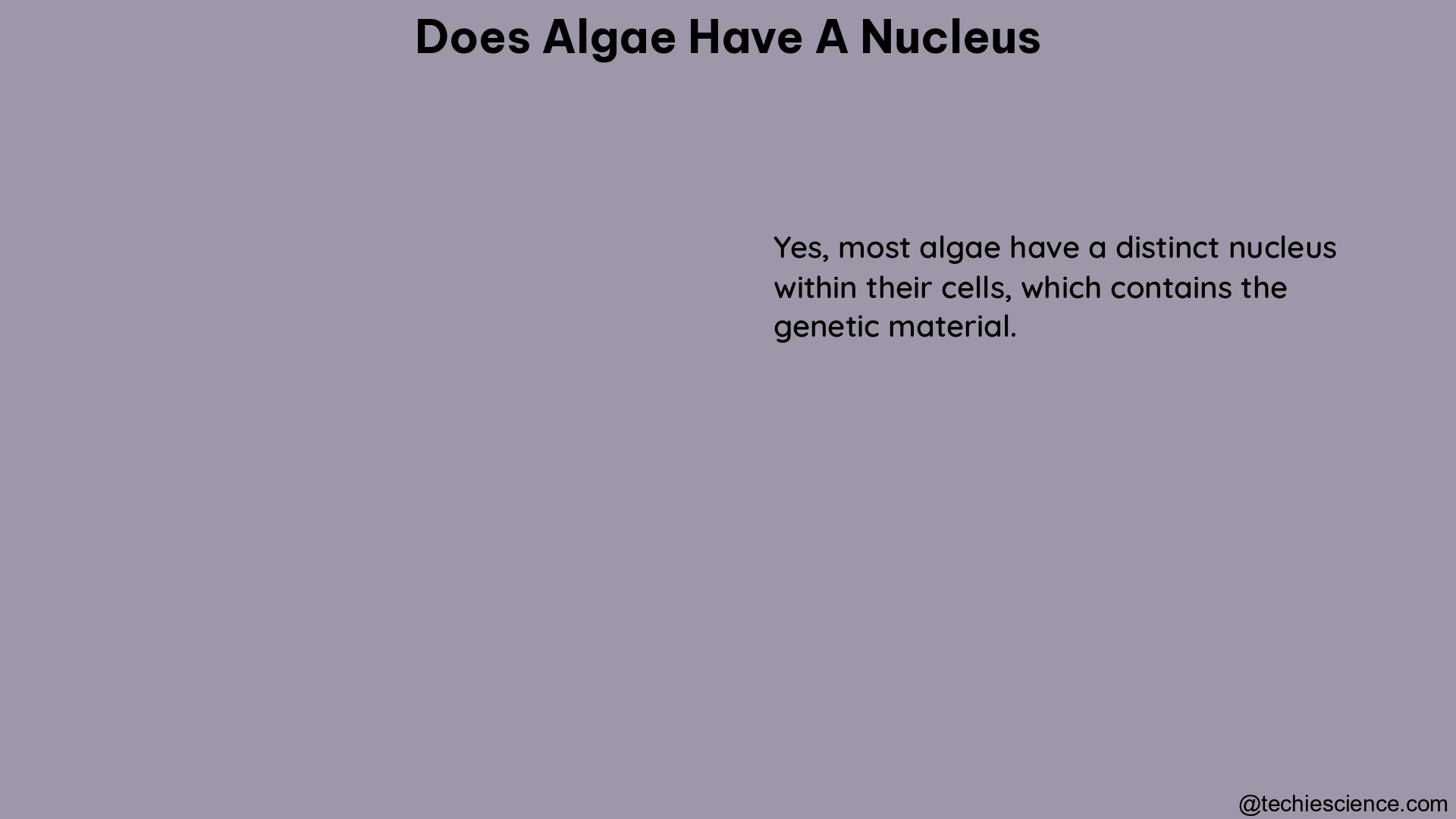Algae, a diverse group of photosynthetic organisms, exhibit a wide range of cellular structures and complexity. The presence or absence of a nucleus in algae is a crucial characteristic that distinguishes different types of these organisms. In this comprehensive guide, we will delve into the intricate details of whether algae possess a nucleus, exploring the various groups and their unique cellular features.
Cyanobacteria: The Primitive Algae without a Nucleus
Cyanobacteria, also known as blue-green algae, are a type of prokaryotic algae that lack a true nucleus and other membrane-bound organelles. These primitive organisms are considered to be the earliest known photosynthetic life forms on Earth, playing a crucial role in the oxygenation of the planet’s atmosphere.
- Cyanobacteria are classified as prokaryotes, meaning they have a simpler cellular structure compared to eukaryotic organisms.
- Instead of a true nucleus, cyanobacteria have a nucleoid region, which is a circular DNA molecule floating freely within the cytoplasm.
- They also lack other membrane-bound organelles, such as mitochondria and chloroplasts, which are characteristic of eukaryotic cells.
- Cyanobacteria rely on a specialized internal membrane system called thylakoids, which house the photosynthetic pigments and machinery.
- Despite their lack of a true nucleus, cyanobacteria are highly successful and adaptable organisms, thriving in a wide range of environments, from freshwater to marine ecosystems.
Eukaryotic Algae: The Diverse Group with a Nucleus

In contrast to cyanobacteria, the majority of algae are eukaryotic organisms, meaning they possess a true nucleus and other membrane-bound organelles. These eukaryotic algae exhibit a remarkable diversity in terms of their cellular structures, habitats, and evolutionary relationships.
Diatoms: The Silica-Encased Algae
Diatoms are a group of eukaryotic algae that are known for their intricate and ornate silica-based cell walls, also known as frustules. These microscopic organisms are found in a wide range of aquatic environments, from freshwater to marine ecosystems.
- Diatoms have a unique cell structure, with a top valve and a bottom valve that fit together like a petri dish.
- The silica frustules of diatoms are perforated with numerous small holes, allowing the exchange of materials and nutrients.
- Inside the diatom cell, you can find a true nucleus, as well as other membrane-bound organelles, such as chloroplasts and mitochondria.
- Diatoms play a crucial role in aquatic food webs and are responsible for a significant portion of the Earth’s primary productivity.
Euglenoids: The Versatile Algae with a Nucleus
Euglenoids are a group of eukaryotic algae that exhibit a unique combination of plant-like and animal-like characteristics. These organisms possess a true nucleus and other membrane-bound organelles, but they also have features that resemble those of protozoans.
- Euglenoids have a distinct cell structure, with a flexible cell membrane called a pellicle, which allows them to change shape and move using a flagellum.
- They possess a red-pigmented “eyespot” or stigma, which is sensitive to light and helps the organism orient itself.
- Euglenoids can obtain energy through photosynthesis, like plants, but they can also consume organic matter, like animals.
- The presence of a true nucleus, chloroplasts, and mitochondria in euglenoids confirms their eukaryotic nature.
Other Eukaryotic Algae: A Diverse Spectrum
Beyond cyanobacteria, diatoms, and euglenoids, the eukaryotic algae include a wide range of other groups, each with its own unique cellular characteristics and evolutionary histories.
- Green algae (Chlorophyta): These algae possess a true nucleus, chloroplasts, and other organelles, similar to land plants.
- Red algae (Rhodophyta): These algae have a true nucleus and complex chloroplasts, but they lack flagella and motile cells.
- Brown algae (Phaeophyta): These large, multicellular algae have a true nucleus, chloroplasts, and other organelles, as well as specialized structures like holdfasts and stipes.
Regardless of their specific cellular features, the vast majority of algae, with the exception of cyanobacteria, are eukaryotic organisms that possess a true nucleus and a complex array of membrane-bound organelles.
Conclusion
In summary, the presence or absence of a nucleus in algae is a defining characteristic that separates different groups of these photosynthetic organisms. While cyanobacteria, the primitive blue-green algae, lack a true nucleus, the majority of algae are eukaryotic and possess a well-defined nucleus, as well as other membrane-bound organelles. This diversity in cellular structure reflects the evolutionary adaptations and ecological roles of the various algal groups, each contributing to the complex and dynamic aquatic ecosystems of our planet.
References:
- Whitton, B. A. (2012). Ecology of Cyanobacteria II: Their Diversity in Space and Time. Springer Science & Business Media.
- Round, F. E. (1990). The Diatoms: Biology and Morphology of the Genera. Cambridge University Press.
- Leander, B. S. (2004). Did trypanosomatid parasites have photosynthetic ancestors?. Trends in microbiology, 12(6), 251-258.
- Graham, L. E., Graham, J. M., & Wilcox, L. W. (2009). Algae. Pearson/Benjamin Cummings.
Hey! I am Sneha Sah, I have completed post graduation in Biotechnology. Science has always been fascinating to me and writing is my passion. As an academic writer my aim is to make Science easy and simple to learn and read.